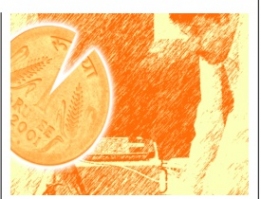Fee Cut - DoT lowers USO levy

-
In an effort to encourage operators who have rolled out networks in more than 95 per cent of the development blocks in a service area, the government has decided to reduce the licence fee. The fee cut will, however, not be applicable in the four metros where operators will continue to pay 10 per cent of their gross revenues to the government despite complete network coverage.
Amending the terms of the universal access service licence, the government has dropped the applicable universal service obligation (USO) levy for such operators to 3 per cent from the current 5 per cent. This translates into the licence fee being reduced to 8 per cent, 6 per cent and 4 per cent, for Category A, B and C circles respectively from 10 per cent, 8 per cent and 6 per cent. The new rates will be applicable from April 2009.
The Department of Telecommunications (DoT) has also clarified that for a telecom operator to be considered as having a presence in a given service area, only an "identifiable physical infrastructure" is enough. The DoT communication states: "verification of the coverage of each development block shall be based on the verification of installation of identifiable physical infrastructure of the licensee for providing telecom access services."
According to market analysts, this move would greatly help operators like Bharti Airtel, Reliance Communications and Bharat Sanchar Nigam limited (BSNL), which have a countrywide presence.
However, several operators are contesting the move based on what they perceive will tantamount to a 33 per cent cut in licence fee. They are of the opinion that the cut should be applicable to all operators, irrespective of whether they have extended services to over 95 per cent residential areas in a state or not. They also want the same to apply to the metros as well.
The Cellular Operators Association of India (COAI) has already voiced its dissent. It has asked DoT to rework the coverage clause. According to it, "Rather than a blanket 95 per cent coverage, a graded system would be better. Telecom companies should enjoy licence fee cuts in a gradual manner – for instance, they can avail of a certain per cent reduction when their coverage reaches 60 per cent of a specified area, followed by subsequent reductions when their networks are available in 70 per cent, 80 per cent and 90 per cent of the residential areas," says a COAI executive.
As of now, operators feel that the new policy is tailored only to help BSNL. Though this viewpoint presents an extreme, operators are of the view that given the unutilised sum in the USO Fund, which has already crossed Rs 200 billion, any reduction in this levy should to be applicable to all players without any riders.
According to analysts, telecom operators have been demanding a lower tax burden for several years especially since the cellular industry is confronted with one of the highest taxes in the world. While operators here pay up to 30 per cent of their gross revenues in different levies, other Asian countries in comparison pay only 5-7 per cent. In light of this, a universal drop in the USO levy would be far more encouraging for operators, as the new announcement will not help many private telecom companies significantly.
In all, although DoT's initiative is in the right direction, operators are asking the government to reconsider a cut in licence fee across the board without imposing any riders.
- Most Viewed
- Most Rated
- Most Shared
- Related Articles
- Manufacturing Hub: India emerges as a ke...
- TRAI performance indicator report for Se...
- Prashant Singhal, partner, telecom indus...
- 2G spectrum scam: continuing controversy
- An Eventful Year: Telecom highlights of ...
- Telecom Round Table: TRAI’s spectrum p...
- Manufacturing Hub: TRAI recommends indig...
- Linking Up: ITIL to merge with Ascend
- High Speed VAS - Killer applications w...
- Bharti Airtel seals deal with Zain - Zai...






